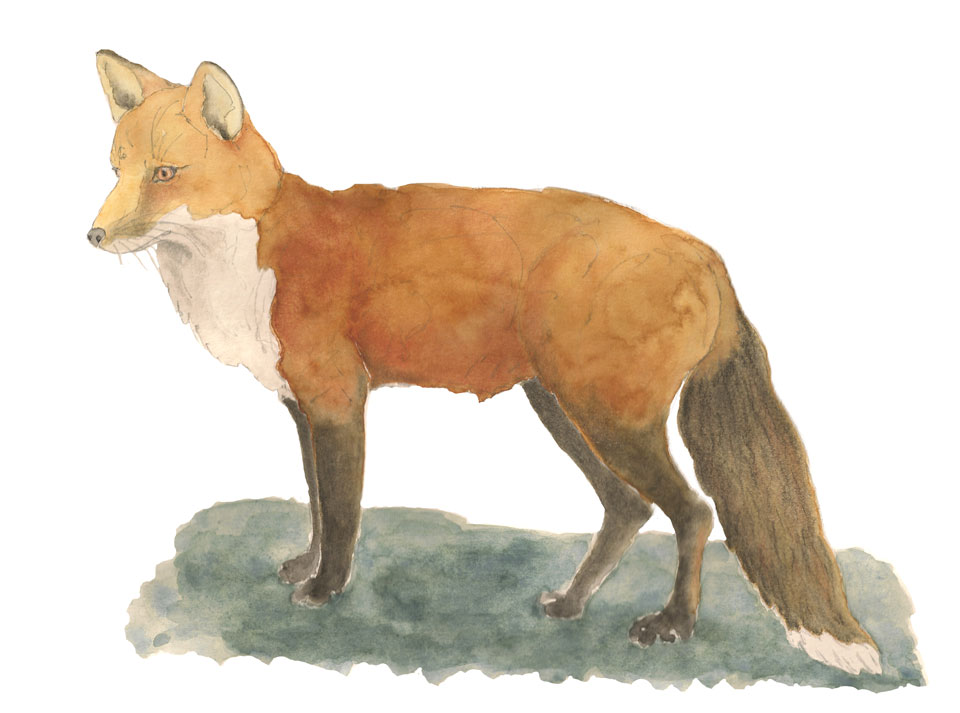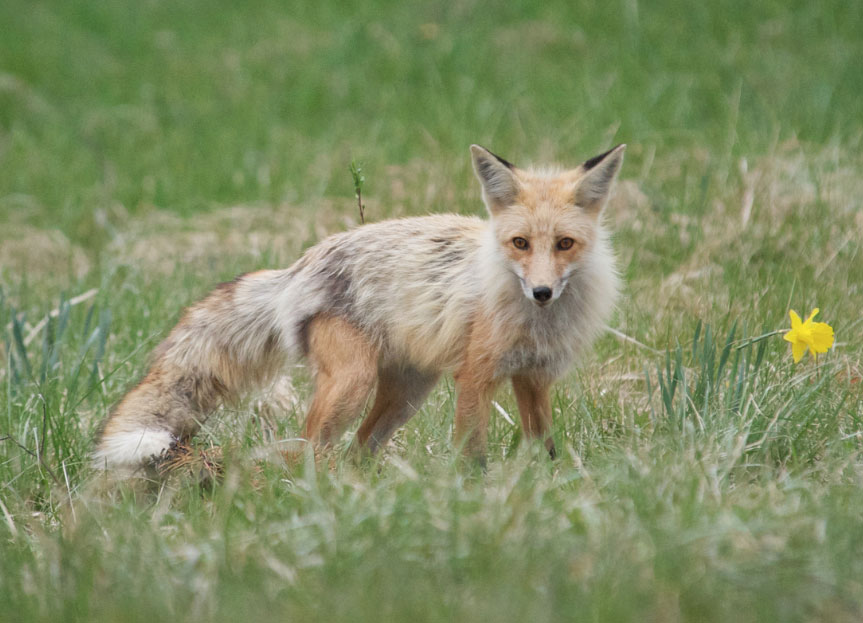The smallest of the canines in the area, foxes typically weigh around 10 pounds. Unlike their larger cousins, wolves and coyotes, foxes are omnivorous: they will prey on smaller animals, but will also eat some plants. Also unlike the larger canids, foxes rarely howl or live in groups. Typically solitary, their sounds are more bark-like. With reddish fur and black “socks,” foxes can be seen in sage flats, grasslands or in forested areas.
The average lifespan of a fox is three to seven years. Some can live as long as 11 years. Like their canine relatives, wolves and coyotes, they mate in late winter/early spring and dig dens where they raise their young. They feed on rodents, birds, and rabbits and will scavenge the carcasses of large animals, usually after wolves or grizzly bears have left the scene. Wolves and coyotes view the fox as a competitor for territory and will kill them if the opportunity arises.



